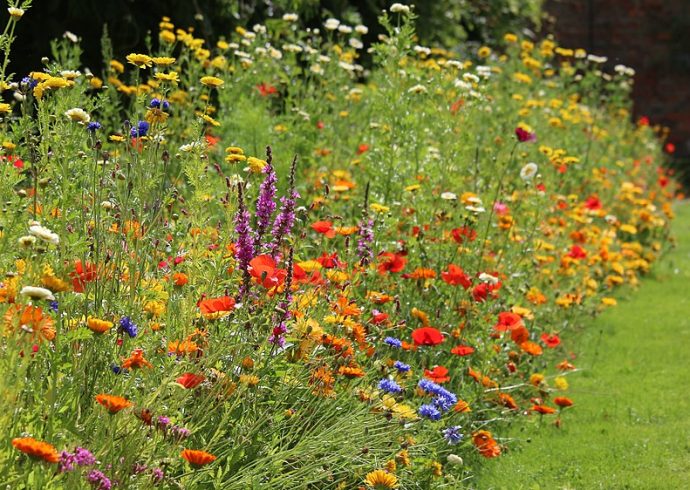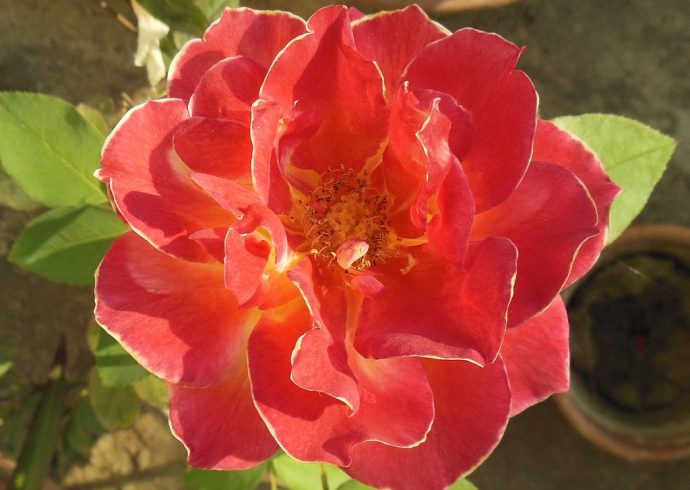
Planting a Japanese Rock Garden
The Japanese rock garden, or Zen garden, is designed in a way that evokes feelings of tranquility when a person sits near the garden. The basic elements of the garden are sand, grass, and rocks. The garden is generally designed with four sides in a rectangular shape but it can also be designed in an oval shape, with sand or fine gravel being the major component with small patches of grass with rocks positioned on top of the grass “islands.” The rocks in a Japanese rock garden are grouped to create a special Buddhist meaning. For example, three stones in a group represent the father (Buddha stone), mother (goddess stone) and child (child’s stone). Stones positioned on their ends so they stand upright originate from the Chinese Heian era (781 to 1185 C.E.) and have taken on a unique Japanese meaning for Buddhist deity representations in the arrangement. Other stones placed at the four quarters of the garden would take on guardian meanings. The actual creation of the garden can be quite easy to make, and does not need to take up the entire space in your backyard.
Measure out an area that is six feet by five feet in size. This area should be dug out from two to three inches deep. Make sure the entire ground is level when dug up before the sand or fine gravel is poured in. A plastic ground cover can be laid at the bottom to keep any weeds from growing through the sand or gravel. Mark out some small island areas within the dugout area where regular soil can be filled in. The islands can be placed either in the direct center or off-center in the area. The soil should be of the type where grass can grow well in, before any rocks are positioned on these islands. Purchase some flexible four or five-inch high ground wood fencing to create a wall around these islands so the soil does not escape from its designated spot. Water the soil before planting grass seed on the islands, then follow the instructions on the grass seed package. You do not need to use a lot of grass seed for this project; a one pound or two-pound bag of grass seed will suffice for the islands in your Japanese rock garden. Allow the grass to grow naturally before you position the rocks on the islands. Alternately, you can grow moss instead of grass on the small islands. Moss Acres.com carries a variety of mosses you can choose from. They can be easier to work with than grass seed as moss is sold in clumps and can be cut to fit any unusual shapes the islands are made in. Follow the planting instructions that come with the moss that is purchased.
Once the grass has grown, or the moss is firmly in place, then the stones can be positioned on the islands. The main island will have the three stones representing the father, mother, and child. A stone that is narrow in shape and positioned upright is ideal to use as the father stone. A round stone represents the mother, and a smaller stone, the child. Medium sized stones can be used as the guardians at the other small islands in the garden.
Fill up the remaining area of the garden with sand or fine gravel. Use a level-head rake to spread the sand or gravel around the islands, bringing it to the very edge where the actual garden area meets the grass in the rest of your yard. Once the sand or gravel is spread to an even level, go around the area again, creating little ridges in the sand or gravel with the tines of the rake. When you do this, move from the inside of the garden outward, so the ridges follow the shape of the islands of the garden.
Your rock garden is now finished, but you can also add other living elements in close proximity of the garden’s borders. A cherry blossom tree, or patch of chrysanthemums nearby can add color within sight of the rock garden. The important thing to remember when creating the rock garden is that it is designed for meditation and simplicity of the Buddhist tradition.
Image Credit: King of Heart/Wikimedia Commons/CC-BY-SA-3.0, CC BY-SA 3.0, via Wikimedia Commons.


